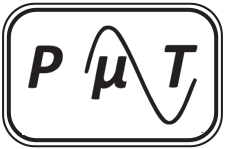Princeton Microwave Technology
PmT is the designer and manufacturer of Microwave solid state amplifiers, oscillators, Transmit-Receive modules and Cryogenically cooled Low Noise amplifiers and sub-systems. We provide both manufacturing and design services for the government, commercial and airborne markets. PmT supports many NSN products for the Defense Logistic Agency.
Understanding Low Phase Noise
Phase noise is a measure of the spectral purity of a signal and can be a critical attribute for many systems and applications. Phase noise is defined as noise power in a 1Hz bandwidth, at a particular frequency removed from the carrier, and the phase noise of the oscillator can impact overall system performance. In communications systems, phase noise of the local oscillator in a transmitter or receiver can cause the signal spectrum to spread out and leak into adjacent channels, causing noise and interference. Digital systems experience the effects of phase noise in the time domain, as jitter. jitter will affect the digital modulation quality, resulting in increased bit error rates. High performance radar systems rely on the detection of extremely faint return signals from the target, and these signals can be easily masked by phase noise of the receiver’s local oscillator. Selecting the appropriate low phase noise oscillator is vital to ensuring overall system and application performance and reliability.
The advantage of ultra-low phase noise
Phase noise standards are implemented for good reason. By meeting or exceeding their specifications, you can optimize and maximize usage of the satellite resource. Well-designed earth stations with ultra-low phase noise have the advantages of:
✓ Improved availability (less susceptibility to other noise sources, even atmospheric/rain) ✓ Increased effective coverage area
✓ Reduced operating costs
✓ Reduced antenna size Lower civils/capital costs
✓ Higher throughput (combination of data rate, modulation and coding rate)

High Q Designs Improves Phase Noise Dielectric Resonators exhibit very High unload Q Factors at microwave frequencies.
Dielectric Resonator Oscillators (DROs) are microwave oscillators that use a dielectric resonator (DR) as the frequency stabilizing element in order to achieve excellent frequency stability, high Q and very low micro-phonics. The DR, when used as part of the resonating circuit of any active microwave device, produces a steady state oscillation under the right conditions at the resonant frequency of the DR.
PLO fundamentals
All microwave oscillators exhibit noise spectra and the mechanisms producing these are well understood. In general, the dominant effect impacting on applications is FM noise (or phase noise, to which it is physically related) which may limit sensitivity, bit rate and channel spacing (amongst other things) in a typical communication system.
There are external sources of FM noise such as mechanical vibration and radiation from nearby digital circuits and power supply lines. Elimination of all of these spurious sources still leaves the fundamental noise mechanisms in the oscillator such as flicker noise and thermal effects which exhibit a generally continuous spectrum whose amplitude is affected by the Q of the oscillator circuit.
The purpose of phase-locking the oscillator is to improve the close to carrier noise of an oscillator which has a good noise floor by superimposing a reference oscillator which has good close to carrier performance. In a typical PLO a crystal having excellent short-term stability is used as a reference for a DRO which has relatively poor short-term stability but an excellent far from carrier noise floor.

Quadruple Output and Increased Efficiency by 50%
Matching linearizers to amplifiers is complex, because amplifiers operate at different frequencies and power levels, and are used for different applications. Linearizers must be finely tuned to cancel the distortion of a particular non-linear amplifier. When properly adjusted, a linearizer can virtually eliminate HPA distortion. This often allows an HPA to more than quadruple its effective output power while increasing its efficiency by more than 50%. Thus, LTI linearizers can significantly reduce the cost of HPA operation. Many systems would not be economically or even technically feasible without LTI linearization.
Capabilities
✓ Micro assembly – Cleanroom – Wire bonding
✓ Die attach
✓ Packaging-high reliability
✓ Harsh environment
✓ ESS/Environmental testing
✓ Vibration testing
✓ Thermal vacuum testing
✓ VNA measurement to >100 GHz
✓ Spectrum measurements to >100 GHz
✓ Nonlinear modeling
Sources of phase noise
A variety of factors in a satellite link will contribute to and affect phase noise:
✓ Phase lock reference for BUC/LNB
✓ PLL LNB design
✓ Loop bandwidth
✓ Power supply noise
✓ Grounding (electronics, cables and antenna structure)
✓ 20 Log(n)
Some of these factors can be minimized through proper selection of subsystem equipment (stated/tested specs from the BCC and LNB manufacturers). Some can be mitigated through good engineering practices and careful site installation (proper grounding in particular). One of the most important contributing factors is the stability of the oscillator that is generating the timing reference for any equipment with a frequency conversion stage (BCC or LNB).
State-of-the-art low-noise frequency synthesis is a crucial technical asset to high-resolution imaging and radar, high-speed telecommunications, and efficient management of the wireless spectrum. It is worth noting that the overall performance of various technologies depends on, and is often limited by, phase and amplitude fluctuation noise in oscillators and frequency synthesizers.
Low Phase Noise amplifiers are critical for many applications requiring high signal integrity. This is especially relevant in instrumentation, defense, and telecommunication applications where low phase noise amplifiers are becoming increasingly important as the oscillators improve. Phase noise is described as the close-in noise to the carrier that can often appear as jitter on a clock signal.
It acquired the assets of Gamma Microwave, HK Microwave and Spectrum Dynamics in 1996. Gamma Microwave was the original manufacturer of Dielectric Resonator Phase Locked Oscillators. Princeton Microwave extended the frequency range with unique Technology with high reliability. improve phase noise performance and circuit methodology to 50 GHz.
